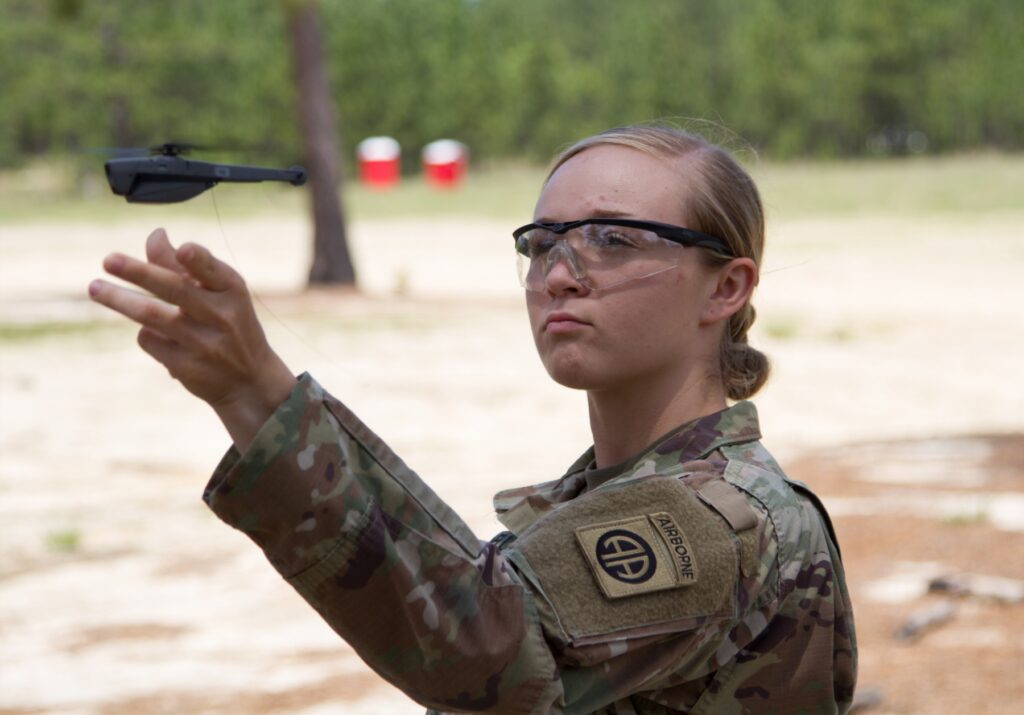
An 82nd Airborne soldier trains with a Black Hornet mini-drone before deploying to Afghanistan.
WASHINGTON: Teledyne $8.2 billion acquisition of FLIR wrapped up on Friday and on Monday the merged teams started work to ensure all the new company’s drones can work with one another — and boy, the combined Teledyne-FLIR builds a lot of drones.
“We’re only two days in, but the excitement is extremely high,” Teledyne-FLIR exec Roger Wells told me. (Wells has worked at FLIR since 2010). Both companies build a wide range of sensors, from FLIR’s namesake infrared to chemical-biological toxin detectors. “We are now a multi-domain unmanned and autonomous systems company, and in a way not many, if any, companies can rival, especially when we’re talking about small, tactical, fully deployed solutions … worldwide.”
Teledyne builds a range of watergoing drones, both Unmanned Surface Vehicles (robot boats) and Unmanned Underwater Vehicles (mini-subs), with the largest being the 18-foot-long SeaRaptor. FLIR builds a host of small aerial drones and ground robots, from the tiny Black Hornet, which can take off from your hand, to the Kobra, whose mechanical claw can lift 330 pounds. The Army is buying thousands of Black Hornets for infantry squads and has officially picked the Kobra as its Common Robotic System – Heavy to replace existing bomb-squad bots.
Now comes the hard part: getting the FLIR and Teledyne products to share data, components, and key technologies. The combined company isn’t imposing a single common set of standards on all its projects – although many already use commercial open architectures. But it’s pushing for a new design philosophy it calls “advanced common software systems architectures.” The goal, Wells told me, is for everything to be “interoperable and integratable out of the box,” not only with other Teledyne-FLIR products but with ongoing military programs such as the handheld ATAK and the IVAS goggles.
“We’re going to be pushing more forcefully to common use of algorithms, of applications, of processing, of software,” Wells told me. Reusing code and physical components across the combined company, instead of reinventing the wheel, saves FLIR-Teledyne money – and, Wells told me, “it makes sense for our customers as well.”
Taking aim: Army leaders ponder mix of precision munitions vs conventional
Three four-star US Army generals this week weighed in with their opinions about finding the right balance between conventional and high-tech munitions – but the answers aren’t easy.


























